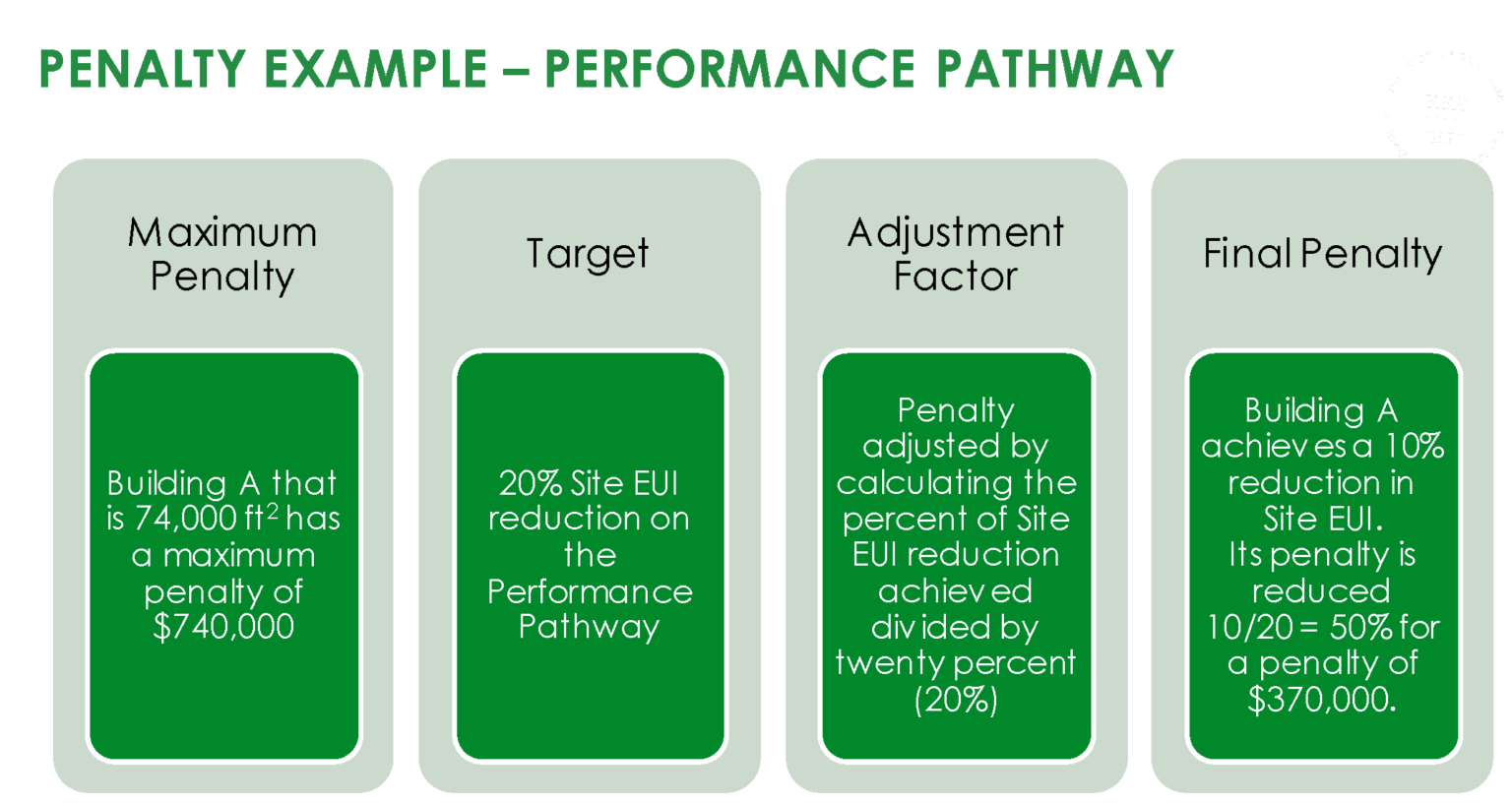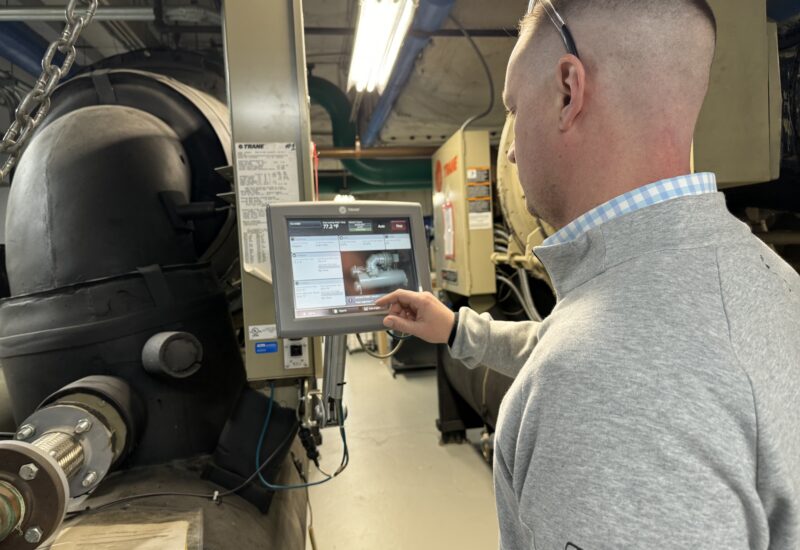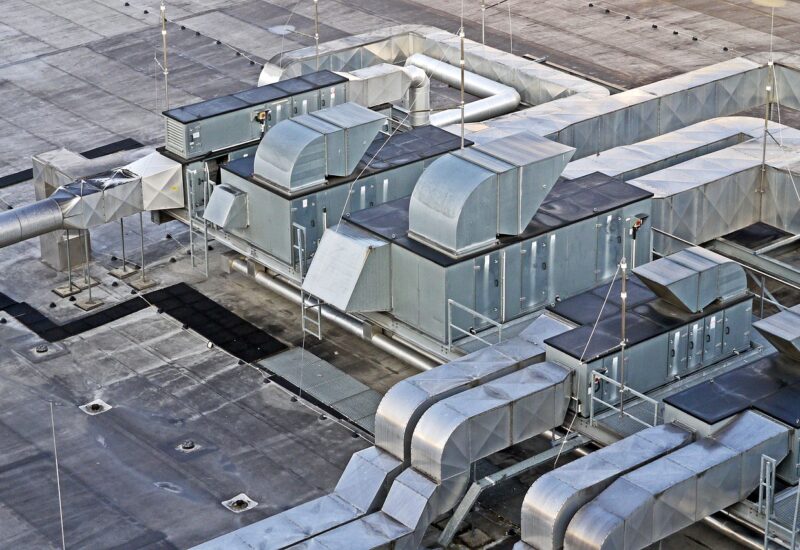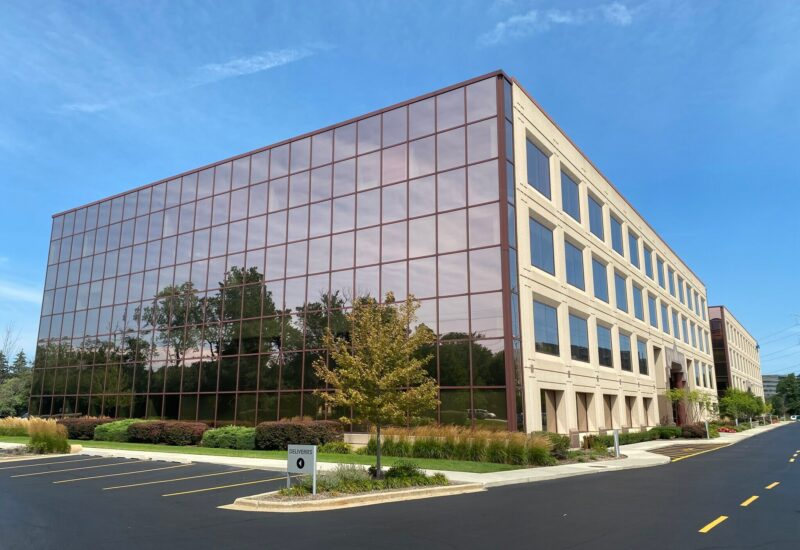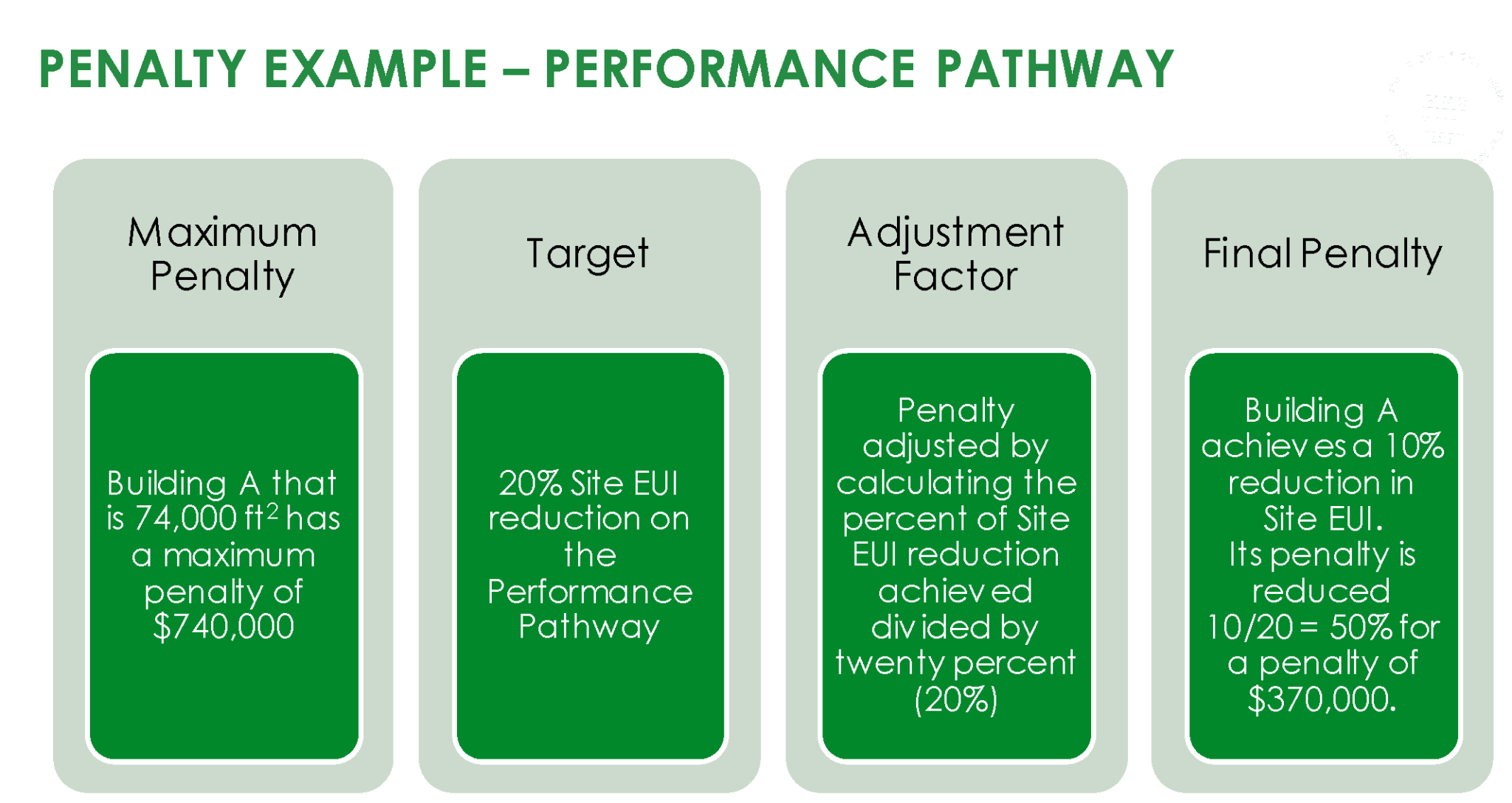Since Baumann’s last DC Building Energy Performance Standards (BEPS) update in June 2021, the DC Department of Energy & Environment (DOEE) published updated draft rules and the enforcement guidebook. The public comment period for the Second Proposed Rulemaking ended on 08/22/21, while the public comment period for the Building Energy Performance Standards Compliance Guidebook is open until 09/22/21. Although the main framework of the rules is unchanged, DOEE did make a number of updates based on public comments and ongoing policy development. Changes of note are summarized below.
Alternative Compliance Payments
The alternative compliance payment structure is now proposed to be set to $10 per square foot with a maximum of $7.5 million, instead of assigning buildings to just 1 of 6 groups defined by size ranges. Additionally, for properties that pursue compliance using the Standard Target Pathway, it is proposed to reduce the fee proportionally to the building performance relative to how close the building is to the 2021 BEPS target. For example, for an office building with an Energy Star Score of 69, which is close to the BEPS of 71, the property’s compliance payment would be reduced by approximately 86% from the beginning. The remaining compliance payment would be eliminated by the property achieving an Energy Star Score of 71 or higher by the end of the current BEPS cycle.
Pathways
The pathways themselves have not changed, but requirements were further detailed as follows.

PRESCRIPTIVE PATHWAY: The prescriptive pathway requires the development and implementation of Energy Efficiency Measures (EEMs) based on an ASHRAE Level 2 Energy Audit. The process is split up into four phases with specific actions and reporting/verification requirements, as shown in the table below.
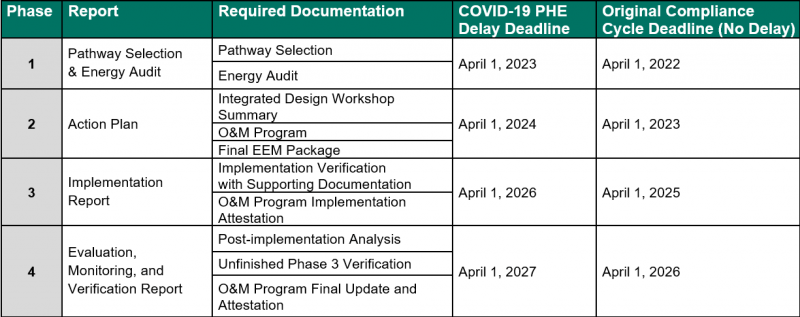
IMPORTANT UPDATES TO THE PRESCRIPTIVE PATHWAY:
- An ASHRAE Level 2 Energy Audit has to be performed by April 2022 or 2023 (if the building is using the year COVID-19 PHE delay) as part of Phase 1 and has to be performed by a qualified and DOEE approved Energy Auditor.
- The energy audit must identify EEMs that total at least 40% savings from the Baseline Site EUI (30% if the Baseline Site EUI is below the EPA national median).
- A final package of EEMs must be created in Phase 2 that achieves at least 25% savings from the Baseline Site EUI.
- For fossil fuel burning equipment, only the replacement of components of an existing fossil fuel burning system may be included as part of the final EEM package. It appears the intent is to avoid the replacement of old fossil-fuel-fired equipment with new fossil-fuel-fired equipment (e.g. a boiler replacement).
STANDARD TARGET PATHWAY: Buildings in a high-performing property type group with a site EUI that is less than 20% below the DC median can pursue the Standard Target Pathway. A building complies if the BEPS target Energy Star Score for this property type (or source EUI for some property types) is achieved by the end of the compliance cycle.
IMPORTANT UPDATES TO THE STANDARD TARGET PATHWAY:
- Properties are eligible if the DC Median for this property type group is at or above the National Median. The comprehensive list is shown in Table 6 on page 22 of the Building Energy Performance Standards Compliance Guidebook and includes the main usage types such as offices and multifamily housing.
- DOEEs online data shows how far each property is away from the DC median. If it is less than 20% below the median, the Standard Target Pathway is a reasonable option.
ALTERNATIVE COMPLIANCE PATHWAY (ACP): The ACP allows approaches outside of the principal pathways for compliance if they achieve the equivalent or greater energy savings than the Principal Pathways. Besides deep energy retrofit with accelerated savings recognition, most ACP options will only apply to a small percentage of DC’s building stock and have specific eligibility restrictions.
IMPORTANT UPDATES TO THE ACP:
- The deep energy retrofit offers 2 options:
- Accelerated Savings Recognition – depending on the site EUI savings achieved in Cycle 1, the project is granted compliance for Cycles 2 and 3, or even 2, 3, and 4. The different levels are shown below. For example, a building that achieves at least a 36% improvement in Cycle 1 is granted compliance for Cycle 2, if it can show that the property maintained at least a 27% improvement at the end of Cycle 2.

- Extended Deep Energy Retrofit (EDER) – allows certain property types to extend efforts into future cycles in exchange for targeting 200% or more of the property’s first cycle minimum performance goal. If a building targets two times the required savings for Cycle 1, compliance is evaluated during Cycle 2. Buildings targeting savings more than three times the required savings for Cycle 1 have until the third cycle to achieve the required savings. This is allowed for affordable housing buildings, rent-controlled buildings, a college/university/hospital campus, or for Cycle 1, buildings that are under financial distress due to COVID-19.

PERFORMANCE PATHWAY: While it is not a change, the compliance requirement is added for information. Compliance with the Performance Pathway is achieved by a 20% reduction in Site EUI from the beginning to the end of the compliance cycle.
New Buildings
The guidebook clarifies the application of BEPS to new buildings that received a Certificate of Occupancy before January 1, 2021, but that did not submit benchmarking data for 2019 (e.g., they were not operational in 2019). For this reason, BEPS does apply to these buildings. Since they did not submit benchmarking data, they are considered non-compliant. Under the ACP option for New Construction, these buildings must meet or exceed the standard for their property type by the end of the current BEPS cycle. Implicit in this is the criteria that a new building must be occupied to a level sufficient to receive an Energy Star Score (if applicable). So, a new office building that does not achieve 50% occupancy by 2026 would potentially not have to comply.
Outlook
Regardless of the compliance path selected, most clients start with an energy use assessment and audit or immediately with an ASHRAE Level 2 Energy Audit to better understand the pros and cons of each compliance path option specific to each building. With the second public comment round for the Draft Rules in the past, we don’t expect significant changes in the rules moving forward and highly recommend initiating the process for non-compliant buildings. The next milestone in the process is the selection of the compliance path option by April 1, 2022, or April 1, 2023, if the building is using the year COVID-19 PHE delay.
